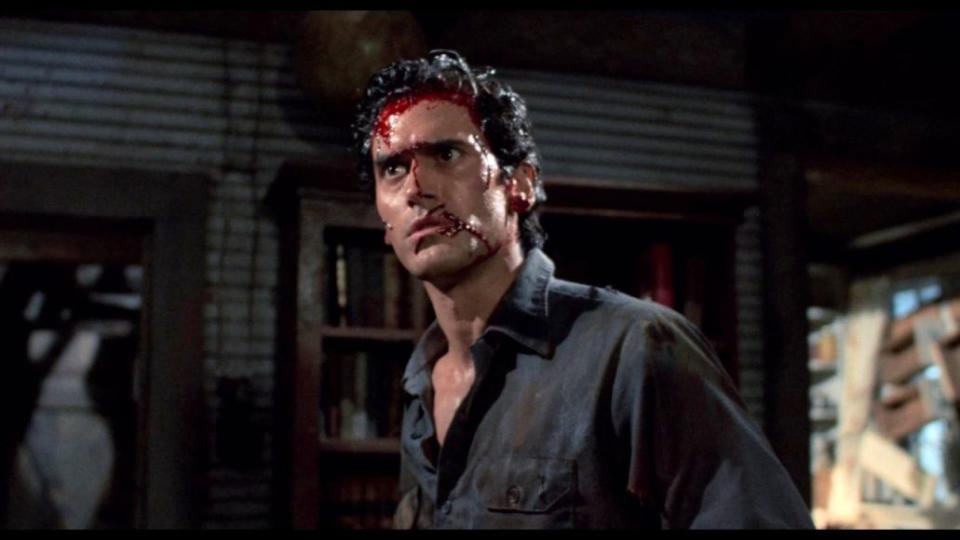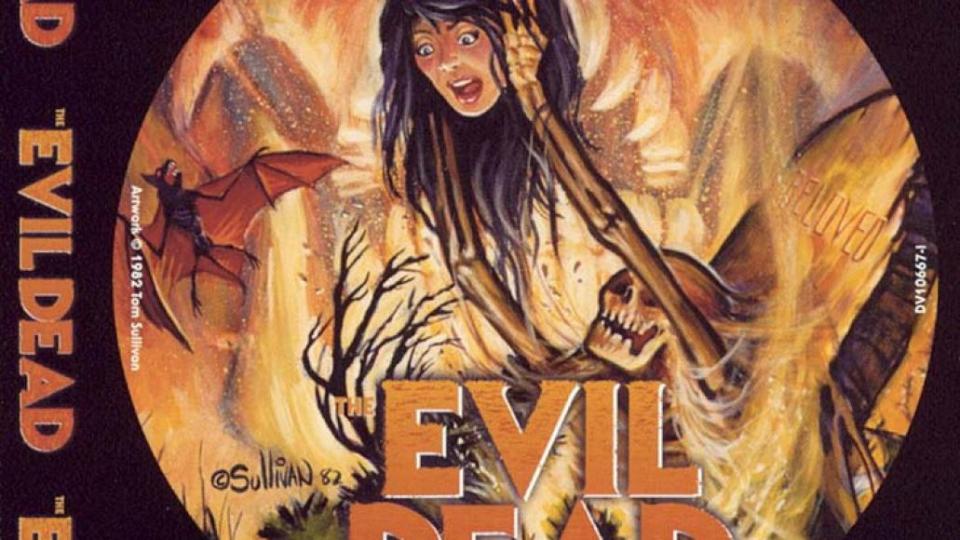Why Evil Dead II Is Still the Quintessential Horror-Comedy of the Modern Age
The post Why Evil Dead II Is Still the Quintessential Horror-Comedy of the Modern Age appeared first on Consequence.
1981’s The Evil Dead was a landmark piece of petrifying cinema and a triumph of independent filmmaking in general. Made for less than half a million dollars, it saw writer/director Sam Raimi, producer Robert Tapert, and star Bruce Campbell expand upon their Within the Woods proof of concept with praiseworthy heart and ingenuity, yielding a cult classic scary movie that almost single-handedly popularized cabin-in-the-woods horror.
Although it wasn’t originally planned to follow its predecessor so closely (more on that in a moment), follow-up Evil Dead II ultimately perfected what its precursor initiated. With about 10 times the budget and a larger and better crew — including both returning SFX artist Tom Sullivan and future KNB EFX Group trio Robert Kurtzman, Greg Nicotero, and Howard Berger — the project ingeniously built upon the lore, carnage, signature camerawork, and surreally sinister vibe of The Evil Dead.
At the same time (and perhaps more importantly), it turned its formerly timid and terrified “final guy” — Ash Williams — into an endearingly machismo pop culture icon amidst implementing the sort of silly jokes and physical gags that the aforementioned creative team grew up with. As a result, Evil Dead II became something even greater than its forebearer: the most influential and essential comedy-horror film of the last 35 years.
Of course, it didn’t exactly start out that way. You see, Raimi, Tapert, and Campbell’s immediate successor to The Evil Dead — 1985’s Crimewave — was a critical and commercial flop. So, the trio decided to revisit their plan to continue the Evil Dead saga by taking it in a less serious direction.
Unfortunately, they were having difficulty getting the necessary funding and distribution — that is, until Stephen King (who championed The Evil Dead as “the most ferociously original horror film of the year”) convinced Dino De Laurentiis to finance it. However, one of De Laurentiis’s stipulations was that they make something similar to the original, so the trio had to save their initial idea — Evil Dead II: Evil Dead and the Army of Darkness — for 1993’s third entry.

Evil Dead II (Renaissance Pictures)
(It’s worth noting that another concept involved having Ash and his girlfriend, Linda, journey to the cabin, only to find a crew of escaped convicts hiding there with their buried loot.)
With De Laurentiis’ request and a heftier — yet still modest — budget of $3.6 million, the crew got to work, using a local farmhouse and J.R. Faison Junior High School (both in Wadesboro, North Carolina) to bring Evil Dead II to life.
In novel fashion, the movie kicks off with a significantly condensed and altered retelling of The Evil Dead that, consequentially, allows Evil Dead II to transform from clever remake to complete sequel. Because they couldn’t secure the rights to that first film — and because they wanted to prioritize speediness and simplicity in the prologue — they opted to forgo three of the original five characters, keeping only Ash and Linda (now played by Denise Bixler instead of Betsy Baker) as the ill-fated couple who happen upon the fiendish residence.
Even this section is more polished, whimsical, and fantastical than its 1981 counterpart. Specifically, moments such as Ash’s overly dramatic piano ode, Linda’s dreamlike reanimated dance, her subsequent headless attack and dismemberment, and Ash’s own day/night possession cycle hint at Raimi and company’s masterful emphasis on stop-motion silliness, inventively dynamic direction, and surprisingly palpable gothic romance and tragedy (in particular, the whole Dr. Jekyll and Mr. Hyde trope).
That said, the look and feel of Ash and Linda’s demonic forms, as well as the extreme bloodshed that they induce, rivals nearly anything that made The Evil Dead “The Ultimate Experience in Grueling Terror” (as one of the film’s official taglines stated).

Once the sequel portion of the movie begins, the same level of stern ghoulishness and resourceful craftsmanship persists. For instance, the sound design and shot composition are at once more sophisticated and menacing than in the prior outing, with plenty of chilling “deadite” wailing and taunting accompanying the invisible force as it chases Ash throughout the cabin (with help from Raimi’s “Ram-O-Cam”).
Anything in its path — doors, windows, you name it — are demolished with singular vision and execution as this force hunts Ash, leading to a sequence that Roger Ebert called “some kind of masterpiece.” There are countless other examples of how the direction and audio complement each other in impeccably unnerving and brilliant ways.
Similarly, the creature effects are top-notch and — when considered apart from any associated ridiculousness — generally terrifying. Certain shots of antagonist Henrietta are downright eerie (and she would’ve been creepier had they kept the part where she begins moving back and forth in her rocking chair, going in and out darkness, with “milky white” eyes).
What’s more, the haunted persona of Ed (the boyfriend of Henrietta’s daughter, researcher Annie) is by far the most spine-chilling, if also physically exaggerated, version of a “deadite” outside of Henrietta’s eventual conversion into her “Pee-wee Head.” As my eight-year-old self can verify, seeing him pop up next to Annie is scary as hell. (Plus, a few techniques–such as close-ups of eyes, panning camerawork, and vibrantly red blood on walls–conjure the best of Italian Giallo master Dario Argento).
Had Evil Dead II merely capitalized on the macabre aspects of its predecessor, it’d still be a great follow-up, but that’s about it. Luckily, it also injected ample amounts of amusement along the way, and it’s precisely that nearly flawless hybrid of humor and horror that makes it a benchmark film in its own right.
As alluded to earlier, each of those four startling demons are offset by over-the-top antics (dancing, floating, etc.) that force viewers to laugh as much as hide. Then there are the movie’s two superlatively legendary moments — the giggling furniture scene and the possessed hand brawl — that serve as exceptional homages to the Three Stooges, Abbot & Costello, the Marx Brothers, and other Golden Age of Hollywood comedy greats.
Enhanced by superb practical effects, bizarre yet hilarious voicework, and some visual puns (namely, Ash putting a copy of Ernest Hemingway’s A Farewell to Arms on the captured appendage), both set pieces are as innovative as they are iconic, signifying one of the biggest reasons for why Evil Dead II is the definitive cinematic instance of fusing frights with funniness.
Obviously, the other big reason is that — like the torrent of crimson liquid that nearly drowned Campbell — Evil Dead II spawned a flood of imitators and acolytes. Likely the most notorious example of the former is Italy’s La Casa series (which, to be fair, also ripped off several other franchises), while arguably the most transparent yet remarkable protégé is Peter Jackson’s 1992 classic, Dead Alive (a.k.a. Braindead).
Then there are the dozens of other movies that, in one way or another, owe a debt to Raimi’s creation. To name a few: Shaun of the Dead, Evil Ed, Bride of Chucky, Cabin in the Woods, Black Sheep, Dead Snow, Tucker & Dale vs Evil, The Babysitter, and even James Wan’s 2021 stylistic amalgam, Malignant (which, coincidentally enough, also incorporated some Giallo trademarks).
I’d be remiss not to mention satirical stage show The Elvis Dead, too, and as Collider‘s Spencer Whitworth aptly suggests, Ash’s evolution — from meek survivor to quippy badass — was itself a significant game-changer for horror protagonists moving forward.
Although the 1981 original left an indelible mark on the genre, it’s this one that paved the way for everything else in the Evil Dead universe (starting with Army of Darkness).
That includes — but isn’t limited to — numerous video games (with another one on the way); action figures; comic books (some of which find Ash facing off against Freddy Krueger, Jason Vorhees, Herbert West, and even zombified versions of Marvel superheroes); the 2015 -2018 Ash vs. Evil Dead TV show; and even its own theatrical production, Evil Dead: The Musical.
Beyond that, much of what Raimi has done since wears this film on its sleeve. From Spider-Man 2’s horrific hospital scene and various nods in Drag Me to Hell, to certain moments in Oz: The Great and Powerful and the newest trailer for Doctor Strange in the Multiverse of Madness, it seems as if Raimi is always paying tribute to the movie that truly put him on the map.
Evil Dead II possessed an imaginative and virtually immaculate ability to merge scares and silliness, and it’s had a creative and/or technical impact on countless newer films (of multiple kinds and cultures). Thus, it remains the quintessential horror-comedy of the modern age.
Sure, there are a lot of close contenders (Army of Darkness is perhaps more overtly entertaining, just as Dead Alive reigns supreme when it comes to gore and goofiness and The Cabin in the Woods provides the greatest metacommentary). Yet, none of them balance divergent tones as well or offer such inventive camerawork alongside other idiosyncratic technical advancements.
Evil Dead II is genuinely the peak of what this style can achieve, and it will continue to swallow our souls for many generations to come.
Evil Dead II is streaming now on HBO Max. The film turns 35 years old on March 13th, 2022.
Why Evil Dead II Is Still the Quintessential Horror-Comedy of the Modern Age
Jordan Blum
Popular Posts
Mark Zuckerberg's Sister Randi Shares Cringeworthy Crypto Music Videos
Slipknot's Corey Taylor Calls Kanye West a "F**king Moron" for Releasing New Album on $200 Device
Kanye West Makes Another "Eazy" Video Beating Up Pete Davidson: Watch
Grimes and Elon Musk Secretly Had a Second Child -- A Daughter Named "Y"
Ozzy and Sharon Osbourne Are Leaving Los Angeles: "The Tax Is Getting Too Much"

